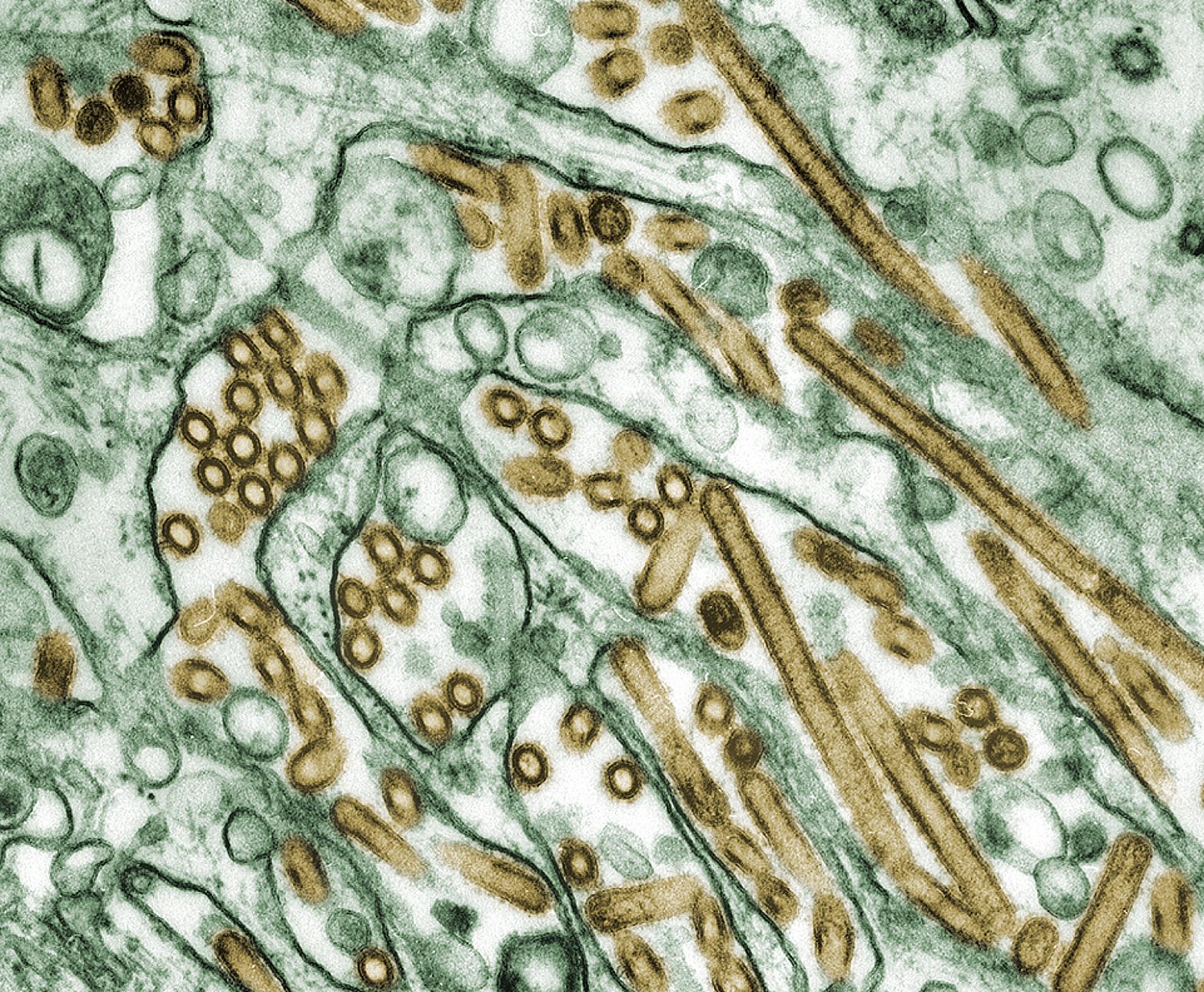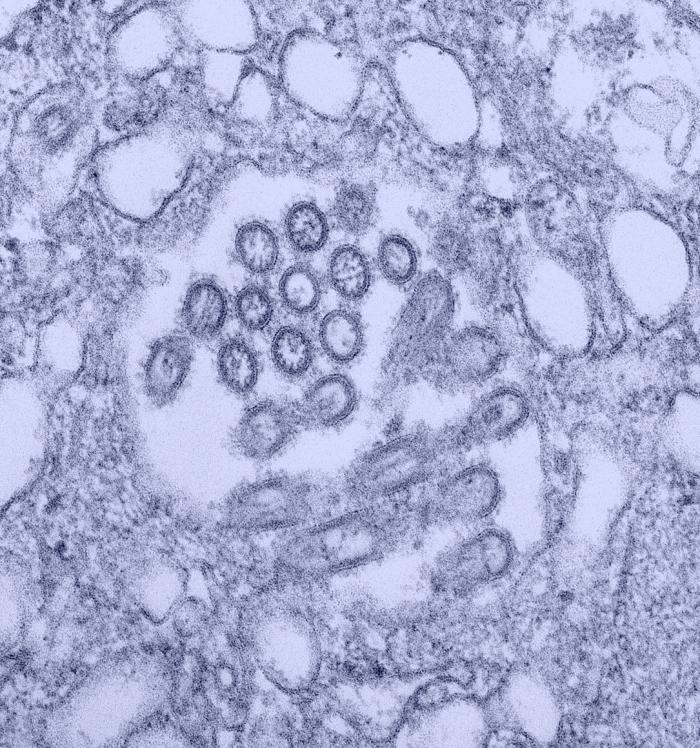Experimental infection with H1N1 European swine influenza virus protects pigs from an infection with the 2009 pandemic H1N1 human influenza virus
The recent pandemic caused by human influenza virus A(H1N1) 2009 contains ancestral gene segments from North American and Eurasian swine lineages as well as from avian and human influenza lineages. The emergence of this A(H1N1) 2009 poses a potential global threat for human health and the fact that it can infect other species, like pigs, favours a possible encounter with other influenza viruses circulating in swine herds. In Europe, H1N1, H1N2 and H3N2 subtypes of swine influenza virus currently have a high prevalence in commercial farms. To better assess the risk posed by the A(H1N1) 2009 in the actual situation of swine farms, we sought to analyze whether a previous infection with a circulating European avian-like swine A/Swine/Spain/53207/2004 (H1N1) influenza virus (hereafter referred to as SwH1N1) generated or not cross-protective immunity against a subsequent infection with the new human pandemic A/Catalonia/63/2009 (H1N1) influenza virus (hereafter referred to as pH1N1) 21 days apart. Pigs infected only with pH1N1 had mild to moderate pathological findings, consisting on broncho-interstitial pneumonia. However, pigs inoculated with SwH1N1 virus and subsequently infected with pH1N1 had very mild lung lesions, apparently attributed to the remaining lesions caused by SwH1N1 infection. These later pigs also exhibited boosted levels of specific antibodies. Finally, animals firstly infected with SwH1N1 virus and latter infected with pH1N1 exhibited undetectable viral RNA load in nasal swabs and lungs after challenge with pH1N1, indicating a cross-protective effect between both strains.
Back to publications
Publication
Contributors
Busquets N, Segales J, Cordoba L, Mussa T, Crisci E, Martin-Valls G E, Simon-Grife M, Perez-Simo M, Perez-Maillo M, Nunez J I, Abad F X, Fraile L, Pina S, Majo N, Bensaid A, Domingo M, Montoya M
Year
2010
Journal
Veterinary Research
Volume
41
Issue
5
Pages
74
Altmetric details

